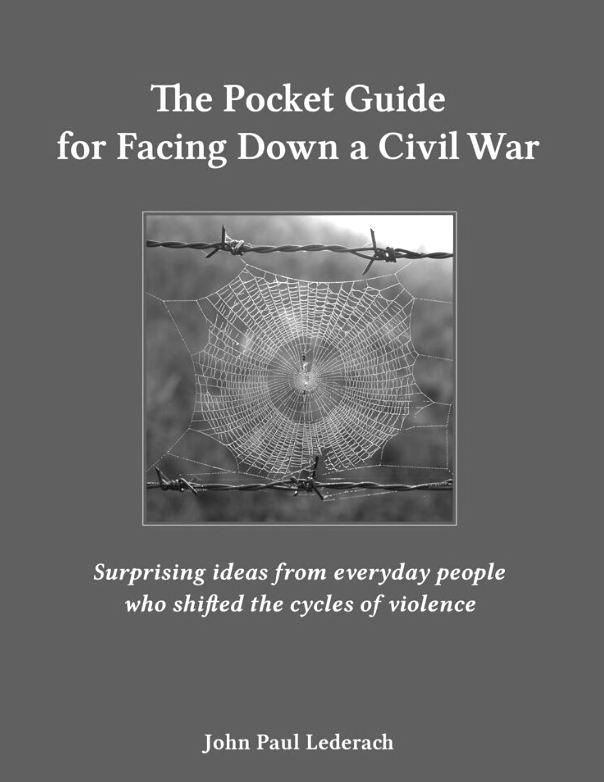Content:

When toxic polarization becomes a civil war
https://wagingnonviolence.org/
03/25/2025
My guest today is John Paul Lederach. He is a globally respected peace builder, mediator, and scholar who’s worked in conflict zones around the world, from Colombia to Northern Ireland to Nepal. His latest book, “The Pocket Guide for Facing Down a Civil War,” offers practical wisdom for those of us who want to resist cycles of division and violence before it’s too late.
In this conversation, we’ll explore what warning signs we should be paying attention to and what history teaches us about healing deep fractures. And most importantly, what each one of us can do in our own communities to build bridges instead of barricades. Let’s turn now to our conversation with John Paul.
Let’s start off with the “Pocket Guide for Facing Down a Civil War.” Tell us about what inspired you to write this book.
John Paul: Well, there are quite a number of things. But I started getting, over the last few years, a lot of requests from people who were preoccupied with two questions, and then a third one, that kept getting at it.
The first question was, given your experiences in international settings of open warfare or war zones, do you think we’re in any danger here in the United States of reaching, from our current level of polarization, into something that looks like that? And those two questions, the comparative, and the US kind of thing, were often followed by the one that said, “What can we do about it?”
And so, instead of just trying to write 100 emails, I started jotting down a number of things that, I felt, did have comparison. And it afforded me the opportunity to reflect on a few of the dynamics that I found most prevalent. My starting point was there never is a perfect comparable case. Every place has its own context and contours and history. You learn that pretty quickly internationally because people say, “Well, we’re not like them, but what are they doing?” You know, so there is simultaneously this deep acknowledgment of the specificity of a context and this deep curiosity about what people have done or need to do.
And so, the chapters kind of unfolded along the lines of, in particular, as it started, one of those requests came from a group of people involved in philanthropy. And they were engaged with asking what they should be doing. This was probably two years prior to this past election. And so, I drafted out something for them and that became kind of the main structure of the book.
I landed on “Pocket Guide,” some people actually tell me, “Well, if it’s a pocket guide, it should sit in your pocket. It should just be like one folded sheet.” And I know that that’s kind of what, you know, birdwatching, you may go out and have this pocket guide unfolds to see what the birds are. But I was actually interested in how much, as I was writing, the word ‘pocket’ kept coming up. Things happened in local pockets, how they expand from there, how, at least in my experience, it’s pretty rare to see a pure top down-approach to a full-blown civil war.
It was much more at the margins that either forms of repression or violence began to happen. How much I even thought about here in the US we’re in different locations where we were living in particular, I’d say down into Tucson, Arizona, or Colorado, and other locations. When you travel, you would sometimes come through an area where you would notice that there clearly were fairly open forms of almost militia-like behavior. People are quite direct and even vociferous about their perspectives.
And again, it’s kind of from the pocket that these things emerge. And so, I was on the one hand, one of the messages was, you know, watch your pockets, keep your eyes on what’s emergent. But the other side of that coin was that so much of my experience over the decades has been that really fantastic innovation does not happen all at once.
It happens because people at a given location, at a given time, have a need to do something in response to what’s happening. And in that innovation, their particular pocket, their particular place where they live, brings forward this kind of combination of resilience and resistance to the patterns that lead us toward violence. And their ability to have that creativity is really what provides an example and light for what others can do.
And a lot of my work, of course, over the years, has at times been at the highest level of negotiations. It’s more often been in accompaniment of local communities. And that’s another way that I understood ‘pocket’, that the real innovations will come when people take seriously what’s actually happening in their backyard, and that they will have to figure that out depending on where they live.
And it’s going to require them to be in a whole series of relationships that may not always feel comfortable. Because for the innovations to last, there has to be a wider set of people coming together than normally hang out. And the patterns of polarization tend to drive us often in the opposite direction. So, that was kind of what was behind it.